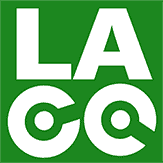Los Angeles Cash For Cars
We Take The Hassle Out of Selling Your Car
My California Release of Liability is Complete – Now What?
You sold your car, submitted your Notice of Transfer and Release of Liability (NRL) to the California DMV, and thought you were done — but then parking tickets, toll violations, or even impound notices start showing up in your name. If this sounds familiar, you’re not alone.
This is one of the most common frustrations for California car sellers. Even when you do everything right, the DMV system and buyer responsibilities don’t always align perfectly. Let’s break down why this happens, what it means, and how to fix it fast.
What the California Notice of Transfer and Release of Liability Does
When you sell a vehicle in California, you’re legally required to file an NRL with the DMV. This form tells the DMV that you’ve sold or transferred ownership of the car and that you’re no longer responsible for it.
Filing your NRL — either online or by mail — protects you from legal and financial responsibility for incidents involving that vehicle after the sale. However, it’s important to understand that the NRL does not change the DMV’s registered owner record immediately. That only happens once the buyer submits the title transfer paperwork and registers the car in their own name.
Until that step happens, the DMV still considers you the official owner, and that’s where problems start.
Common Reasons You’re Still Getting Tickets After Filing Your NRL
1. The Buyer Never Registered the Vehicle
This is the most common reason sellers get stuck with tickets or toll notices after selling a car. If the buyer never completes the registration transfer at the DMV, the vehicle stays in your name in the state’s database.
Even though you filed your NRL, the DMV can’t mark the ownership as “transferred” until the buyer submits their side of the paperwork. This means parking tickets, toll violations, or impound fees may still come to you.
How to fix it: Contact the ticketing agency (e.g., Los Angeles Parking Enforcement or FasTrak) and provide:
- A copy of your NRL confirmation
- A bill of sale or receipt showing the sale date
Any communication showing when the car was sold
Once they verify your sale date, they can often dismiss or reassign the citation to the new owner.
2. The NRL Was Submitted with Errors or Didn’t Process Correctly
Sometimes, online NRL submissions don’t fully process if there’s missing or incorrect information — like a typo in the VIN, sale date, or license plate number. Without a valid confirmation, the DMV may not have completed your file.
How to fix it: Check your NRL submission status on the California DMV website. If you didn’t receive a confirmation number, call the DMV at (800) 777-0133 to verify. You may need to resubmit the form or mail in a copy of your original sale documents.
3. The Violation Happened Before the Transfer Was Processed
Even if you sold the car and filed the NRL, tickets issued before the DMV processed your form can still land in your name. The DMV records by processing date, not the actual sale date, unless proof is provided.
How to fix it:Submit a copy of your dated bill of sale, any text or email communications confirming the sale, and your NRL confirmation to the issuing agency. They can often adjust the date and remove your responsibility.
4. The Car Was Re-Sold or Abandoned
Sometimes buyers flip or abandon vehicles without ever registering them. The car might change hands multiple times, but your name remains the only one on file.
How to fix it: File a Statement of Facts (Form REG 256) with the DMV explaining the situation. Attach your NRL confirmation and proof of sale. This helps protect you from future legal or financial issues related to the car.
